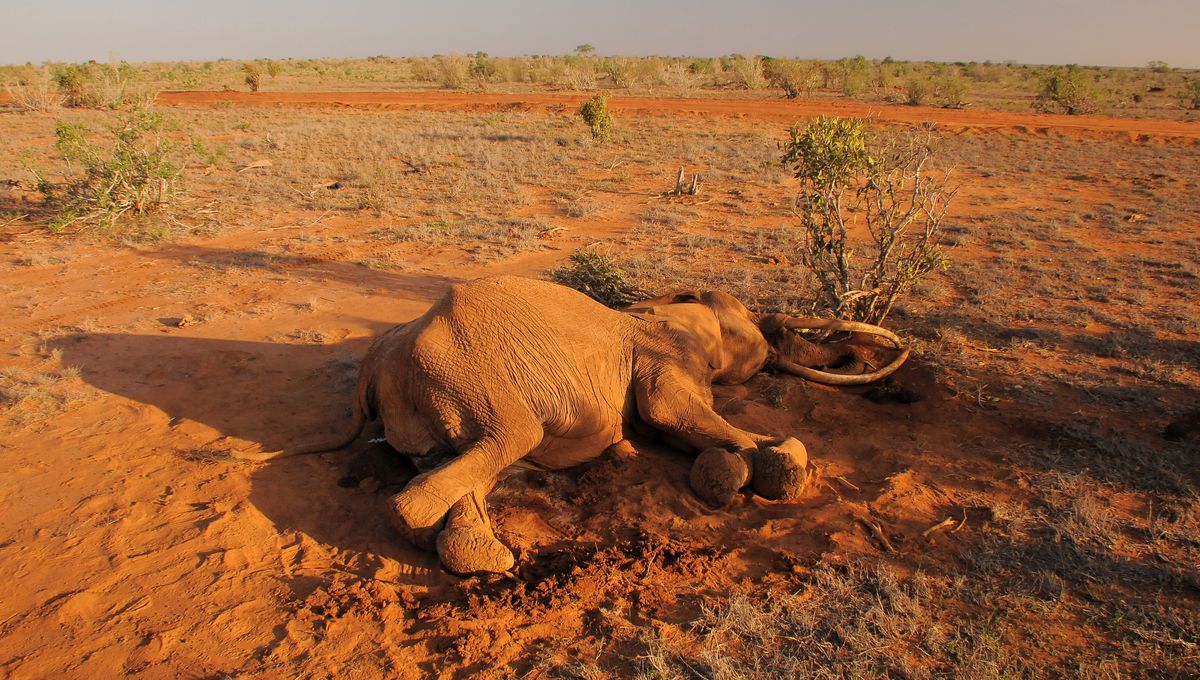
Scientists may have found the culprit behind the death of hundreds of African elephants back in 2020: an obscure bacterium known as Bisgaard taxon 45 that’s never been seen in wild elephants before.
In May and June 2020, a total of 350 elephants in Botswana mysteriously dropped dead. Following this mass die-off, a further 35 elephants died between August and September 2020 in a patch of Northwestern Zimbabwe.
The carcasses were found intact, suggesting they were not poached for their tusks or meat, plus there was also no evidence of poisoning, which can occur where there is human-animal conflict. Wildlife experts speculated that cyanobacteria might be responsible, but this was later ruled out.
In a new study, UK scientists studied 15 of the affected elephants from the August to September event and found that six were infected with Bisgaard taxon 45, which caused fatal septicemia (blood poisoning).
While the study sample size was limited due to the difficulties working in rural Zimbabwe, the researchers believe the bacteria may be linked to the hundreds of other elephant deaths.
“The identification of this bacterium is a significant step forward in learning more about why these elephants died,” Professor Falko Steinbach, head of virology at the UK Animal and Plant Health Agency, said in a statement.
Bisgaard taxon 45 is a member the of Pasteurellaceae bacterial family, although little else is known about it. Never seen before in elephants, the source of infection and route of transmission are currently unknown.
The bacteria have previously been reported in healthy parrots, leading the researchers to believe they may “represent a previously unknown part of elephants’ normal flora in this region.” Alternatively, the elephants may have picked up the bacteria from another animal they share their environment with.
Elephants are extremely sociable animals that live in large groups and frequently enjoy physical contact with one another, so it’s easy to see how the infection might have been passed around the groups. Furthermore, the study authors write that elephants’ natural curiosity about death, whereby they sniff and touch their deceased family, could serve as an additional opportunity for exposure.
“Transmission of the bacteria is possible, especially given the highly sociable nature of elephants and the link between this infection and the stress associated with extreme weather events such as drought, which may make outbreaks more likely,” explained Steinbach.
The African forest elephant (Loxodonta cyclotis) is now listed as Critically Endangered and the African savanna elephant (Loxodonta africana) as Endangered, according to the IUCN Red List. It’s possible that this little-known pathogen in elephants might represent yet another pressure on their existence.
“Further research is needed to learn more about the bacteria and its long-term implications for the African elephant population and other wildlife,” added Steinbach.
The study is published in the journal Nature Communications.
Source Link: Cause Of Over 350 Mysterious Elephant Deaths May Have Been Pinpointed